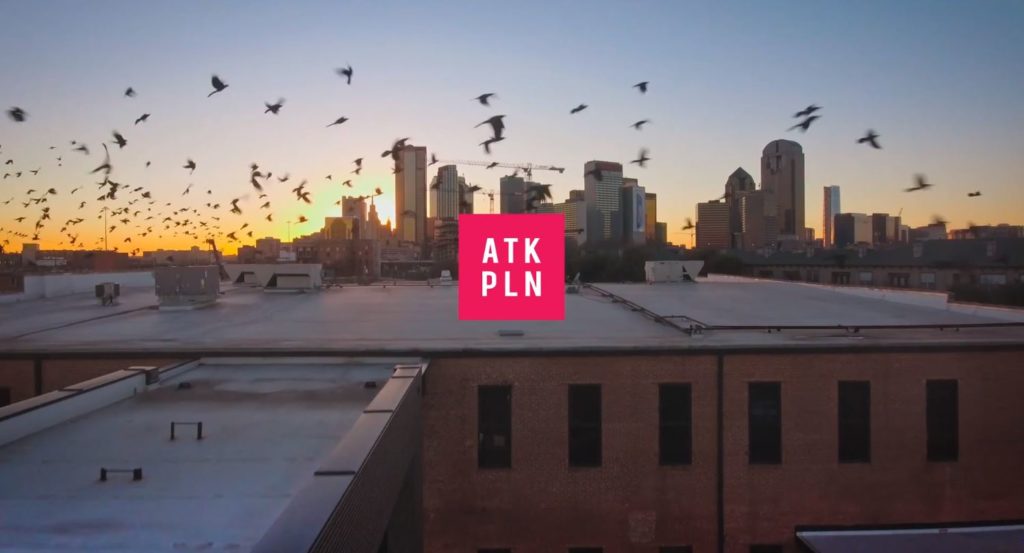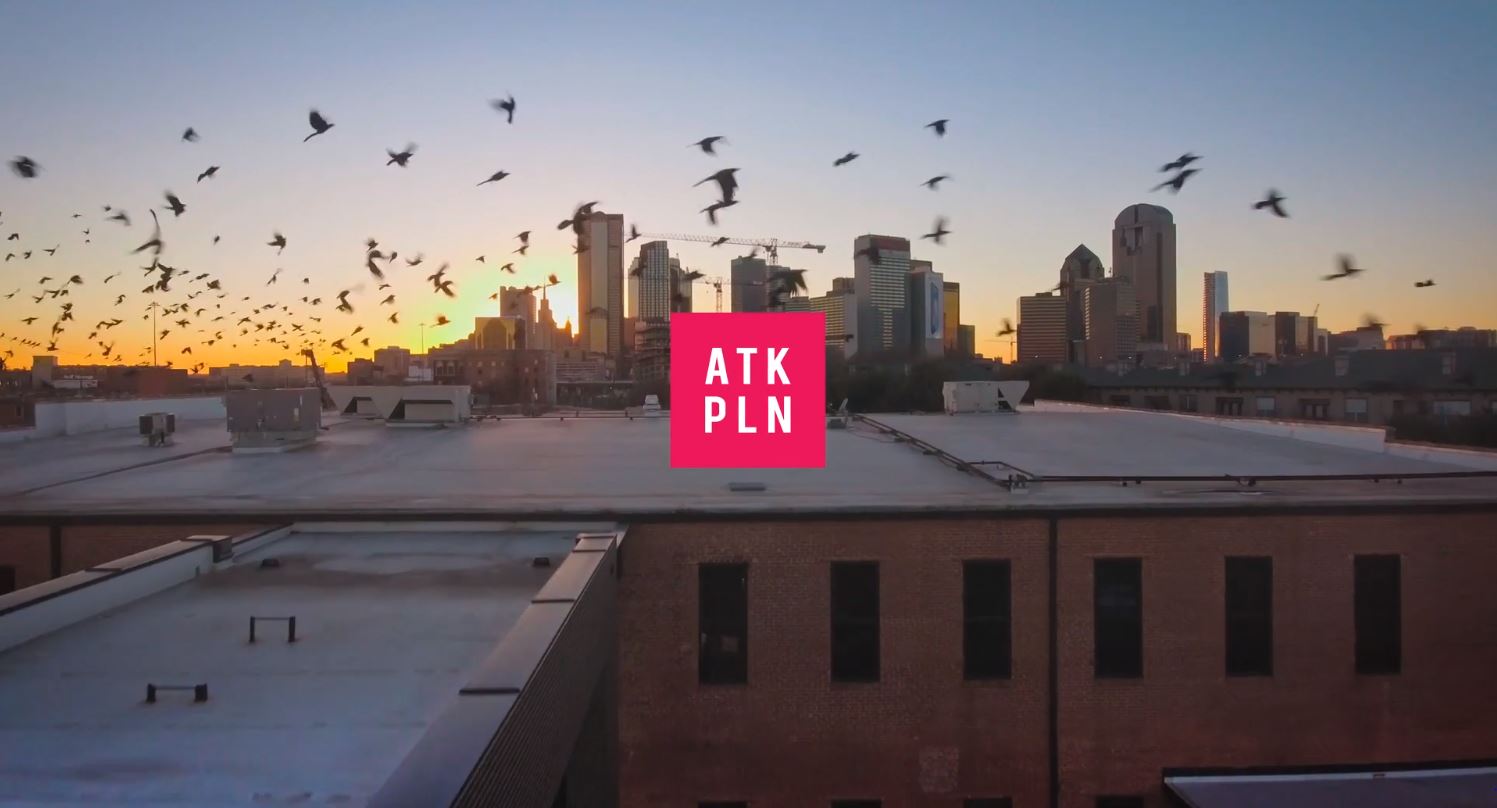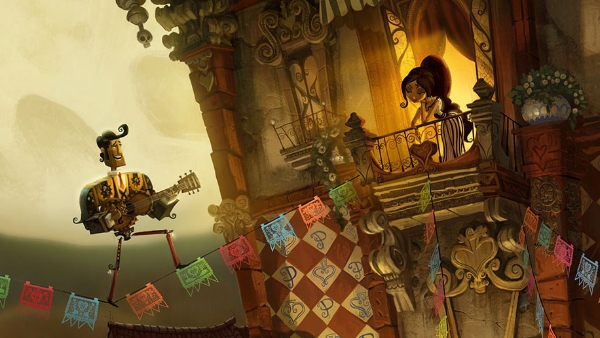 If you live or work in the Dallas area, the fact that business is booming is probably not news to anyone. Yet, as much as the many cranes are putting up buildings and apartments at breakneck speed changing our skyline, you might be unaware of other trades hard at work to produce world-class products and adding to the notoriety and culture of the metroplex.
If you live or work in the Dallas area, the fact that business is booming is probably not news to anyone. Yet, as much as the many cranes are putting up buildings and apartments at breakneck speed changing our skyline, you might be unaware of other trades hard at work to produce world-class products and adding to the notoriety and culture of the metroplex.
One such company is Reel FX – Dallas’ own big-league animation studio. Now whether you knew what goes on in that non-descript red brick building in Deep Ellum or not, the caliber of digital wizardry therein produces commercial and feature length animation that sets the standard for the industry. You saw The Book of Life? That was them. The Katy Perry video ‘Firework’? Them, too. And this commercial for The Walking Dead? Uh-huh. Reel FX. Also, take note of how quick this travel video takes your breath away.
The firm houses (combined with their California and Montreal studios) more than 200 employees who are skilled at all things digital and live-action. The newest brand under the Reel FX umbrella is ATK PLN headed by Emmy-winner Jose Sebastian Gomez. This commercial arm of the parent company was the brainchild of Gomez as well as David Bates, Jim Richie and Reel FX CEO, Steve O’Brien.
We spent an hour with Gomez to talk about his work and working with clients in the ever-evolving digital age.
GoSeeTalk: Jose, you’ve covered a lot of ground prior to joining up Reel FX. Give us a little back story about yourself and your career.
Jose Sebastian Gomez: My early background has roots in the skateboarding and action sports industries. I’ve always been a traditional artist and always enjoyed the work in creating skateboards and all the graphics surrounding that industry. I started getting interested in skate videos and really wanted them to be different by using design and animation as opposed to just editing. I learned a lot about motion graphics at that time and it was before After Effects existed; I was fumbling around with Premiere. In 2001, I started my own production company, called Shilo, which we set up as and always maintained the feel of a boutique agency.
Reel FX contacted me about acquiring Shilo. It didn’t work out the first time, but we had kept talking about how to grow together, and this time it made sense that I would come here and take all the work that I had done over the years and combine it with the commercial work that’s here to create this new entity called ATK PLN.
The brand has the boutique sensibility and design prowess of Shilo, but the wherewithal and structure of a company like Reel FX. Here we have more ammunition to get things done at even a higher level than before so it’s worked out better for everyone.
When I think of a commercial, I think of 30-second TV spots. What is a commercial these days, and how has it changed since you started your career?
Oh, it’s so much more than that because media has evolved beyond television. Most of the work we do now is more than just the delivery method. Clients and creatives are more focused on story telling and the quality of the content. These days you’re competing for a lot of eyeballs, and people want to have something that’s entertaining and not robbing the audience of their time. That’s our sweet spot: being as creative as possible while presenting something that touches you in an emotional or visceral way.
Campaign range from a 30-second component that goes to broadcast, a 60-second component on YouTube, pre-roll, social, and a branded 2-minute film. There’s lots avenues in a campaign to reach an audience these days.
Do you think there’s a line between what’s considered marketing – banners, ads and such using branded assets – and what’s accepted as a commercial? The lines seem to be blurred.
They are continually getting blurred. The internet has really democratized things. What benefits us is that moving image is continuing to be adopted and expected for on-line advertising and experiences.
Early on, we didn’t do much for online distribution because there wasn’t a lot of moving content being adopted at the time. But as services like YouTube and social networks became widely adopted it became viable to produce moving content online. Clients, early on, didn’t really accept that as a medium. They considered it a freebie. Now it’s a must have. It’s gone far beyond the banner ad.
I see that Reel FX has different divisions. Wilson has similar brands that offer specific functions and services to clients using design vocabulary tailored to the scope of work. What is the productivity path or work flow through your different brands? Or do they work independently?
If you break it down, Reel FX is the mothership. Reel FX is focused on Hollywood filmmaking – animated shorts, animated full feature films. ATK PLN focuses on content and advertising, and Flight School is experiential media like VR/AR.
People tune into how we attack specific markets rather than trying to be the one stop shop. You’re simplifying the messaging. It makes the work quick because you’re focused. I’m a big believer that brands have their own personality. Your brand personality is what you exude and how the world sees you. I think us separating the three distinct brands has helped us leverage our strengths better.
How do you engage clients, and what’s your criteria for taking the job. Do you need the whole campaign, or can you take part of it?
For us, we’ll do both. At the end of the day, the only way you can convince a client to award you more work is by doing excellent work. You can’t convince them by getting them on the phone and schmoozing them to give you the whole thing. In my experience, it doesn’t work that way. We keep our heads down, do a great job, and you won’t even have to ask. They’ll come to you. We have sales efforts, but we’re really focused on developing relationships through great work.
Do you get into scenarios where a client sees something, is wowed by it, and they go “I want that?” But they don’t want to redo it?
I always try to get to the intent of their request. I ask them, “Why do you like this? What is the component that inspires you?” You can draw on that, and take it a variety of different ways, but that’s the struggle.
I like to think that our best work hasn’t been done. We can take the things we’ve learned in the past fifteen years, carry it to the next project, and continue to improve. We have similar situations where Clients do come to us and say “copy this.”
At times clients get nervous with… “That’s never been done before, but I totally think we can knock it out of the park.” they want you to say, “We’ve done it, don’t worry, you’re gonna be fine.”
You have to make sure to keep control of the project while instilling confidence in your clients. If things aren’t going well, you can see it coming; nine times out of ten, it doesn’t hit you by surprise. I like to try to get ahead of problems. Being a creative director, I tend to spend a lot of time thinking about what my clients. How are they responding to this? What can I do to make them more confident in our direction?
I’ll get ahead of them to make them feel good about the project, because once they’re comfortable, they’ll give you more freedom and just let you go. When it’s based on fear, and they’re afraid of the process, is when they start micromanaging the creative process.
That really boils down to how much a client understands about the work you do, and how things work.
Totally. Animation is not something that is taken lightly. It’s a definite process, and it’s something to make them feel better about it, but you also protect them from themselves by laying out, very clearly, what you’re doing and what the next step is. Some clients have other factors that are out of their control – like their clients – and you have to be able to react and execute. The best laid plans can always go awry.
That’s a good point because that backs up why there are so many stages in the process, and why it take the amount of time it does to do something. My old boss used to say, it takes 9 months to make a baby, and some things just can’t be sped up.
Educating them on the parts of the process they’re not familiar with is important. If they’ve only ever worked on live action, you need to explain how layered and procedural animation is. With live action you can make edit changes on the fly and you can’t do that when you’re rendering.
Now that we’re two decades into the 21st century, what is an animation studio theses days, and what must it comprise to stay competitive and relevant?
That is a very complex question with many different answers. In the early 2000s, there was a rise of motion graphics studios that, before the mid-level sized studios, you only had the large outfits like ILM and Digital Domain. So, many animators thought it was out of reach. Then with the advent of After Effects. and the Mac and desktop machines, from a business perspective, you were able to build a team outside of Hollywood without a huge render farm or millions of dollars of infrastructure.
Being flexible is key, ten years from now, broadcast and social media might adapt and morph into something else, but we’ll always be trying to tell stories – that will be a constant. It’s the delivery method of those stories that is always in flux and changing. Being adaptable to that is always key to having an animation studio, a production studio, or content creation and ideation that clients are looking for.
Does being nimble mean being an early adopter? The Shinola watch factory tour that Luke and Andrew Wilson spearheaded was awesome and showed what’s possible with new technology. It felt like this could catch on and didn’t feel like a gimmick.
That’s one thing that Reel FX has been good at is early adopting. I think we had the one of the first VR headsets, so, yes, being an early adopter is a huge benefit as well as not be afraid of what’s coming. Sometimes things take off and sometimes they don’t. I think AR is going to take off, and VR is going to fall by the way side, compared to AR. Some people may totally disagree with me, but that’s the thing – you have to be able to absorb and execute all those mediums.
AR is a lot more accessible so maybe that’s why it will take the lead in the future.
It’s an easier medium to adopt because there’s less of that environmental fatigue. VR is a bit more of an effort to engage with both the equipment and the digital interface. But there will be a place for it always.
Maybe I’m old school, but I like when a movie takes me somewhere and I’m a passenger on that person’s journey rather than me influencing or changing the story. When people talk about VR movies where you can direct the story line, through your actions, I just don’t want that.
When it comes to telling or experiencing stories and the technology to do so, what excites you? Are you so far ahead that you’re always looking for something new? Or are you happy with the present?
I’m a bit of a sap. I’m not a technically driven creative. I don’t get excited about cameras, or lenses, or head gear, or computers. Those are just tools to me. What I get
excited about are when you experience a great story that pulls you in and touches you emotionally.
Film is the only medium where you can take sound, picture, story and be at the middle of that to have an emotional experience.
If you watch a Kubrick film or Lynch film, they have their own style. Not just visually, but audio cues, and storyline cues that are part of this experience that they have built.
Because of pop-up ads, people’s sales resistance is pretty high. When I see a commercial, what breaks down that barrier and resonates with me is the humor. I’m still laughing about the Doritos commercial from the Super Bowl. What speaks to you?
The new Apple Home Pod film by Spike Jones. That’s a really great commercial experience. It’s basically a metaphor for her imagination and she’s expanding her world. The behind-the-scenes even inspired me more than the commercial.
But that spot falls into a sweet spot where you’re taking an abstract story about the basics of human interaction, and then using your imagination to expand the limits of your surroundings. It’s the stuff that we all want to do. It just takes you to a different place. That’s an example of great work, and that excites me.
How do you get the untapped creativity energy out?
Sometimes, when I have something creative that I can’t really do in my field, I’ll go home and paint, or draw. I will just do it for me – no stakes, no pressure, and it’s creative expression. You’re not in a box, yet the flip side of that is that I get the most creative, and people I know get even more creative, when we get put in boxes and we have to get out of them.
When the client paints you into a corner, some of the best ideas come out of those situations. When you have all the freedom in the world, you’re kind of like a kid in a candy store where they just don’t know what to grab. If you’re focused, and you have an objective to figure out, sometimes magic happens.
Thanks for Jose for his time and for Reel FX for their hospitality. At the main website you can find links to ATK PLN, Flight School, and the other brands under the Reel FX umbrella. There’s even some looks into upcoming projects which look amazing.




